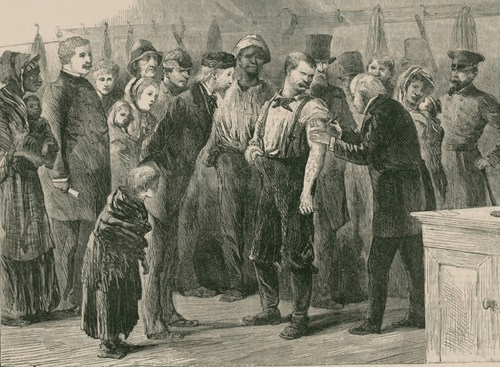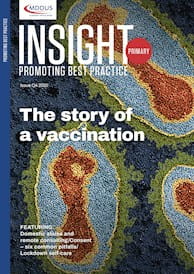 THE UK is currently holding its breath, waiting to see whether its first approved vaccine will deliver us from the constraints of the coronavirus lockdowns. There is a flurry of research activity across the globe evaluating numerous other contenders, and there is growing confidence that the solution to the pandemic is in sight.
THE UK is currently holding its breath, waiting to see whether its first approved vaccine will deliver us from the constraints of the coronavirus lockdowns. There is a flurry of research activity across the globe evaluating numerous other contenders, and there is growing confidence that the solution to the pandemic is in sight.
Of course, such a strategy is not new. When it comes to infectious diseases, modern prevention is built upon the use of well-tested vaccines. But why do we call them vaccines and what might have been their origin? To answer these questions, we have to go back over two centuries to the work of an English country doctor.
Edward Jenner
Edward Jenner was born in Berkeley, Gloucestershire in 1749. As a teenager he was apprenticed to a surgeon, and at 21 he moved to London to complete his medical training under the charismatic and influential John Hunter at St George’s Medical School. At the age of 23, Jenner returned to his birthplace to set up practice and would remain there for the rest of his life.
Like others of his time, he was a man of the Enlightenment and pursued diverse interests. He was a musician, poet, balloonist and geologist. His interest in ornithology earned him his Fellowship of the Royal Society when he worked out that it was the cuckoo hatchling that evicted the eggs and chicks from its foster parents’ nest and not the adult bird. But it is not for the study of the cuckoo that we best remember Jenner today; it is his contribution to the prevention of smallpox.
Viral immunity
Smallpox is a viral disease that has had devastating effects on humans throughout history. It is associated with a high death rate — particularly in infants — and many survivors are left blind or with disfiguring scars. However, it was well known throughout the ages that survivors of smallpox were immune to reinfection. It was perhaps a small logical step to think of deliberately infecting non-immune individuals with a mild case of smallpox in order to render them immune to a more serious and potentially life-threatening one.
Such a practice had been carried out since at least the 17th century and probably much longer before that, and included the inoculation, or grafting, of pus from smallpox lesions under the skin of non-immune subjects.
This form of inoculation was also known as variolation from the Latin for smallpox: variola. Jenner himself had been variolated as an eight-year-old boy, as had countless others. Variolation was of course potentially dangerous — not only did two to three per cent of those inoculated die from smallpox as a direct result of the deliberate infection, others contracted blood borne diseases such as syphilis from the procedure. However, its widespread use did significantly reduce the death toll from natural infection.
Cowpox
It was also widely known that cowpox, a much milder infection that milkmaids and farmers might contract from their infected cattle, could protect against its more deadly viral relative, smallpox. The usual version of how Jenner came to be acquainted with this idea is that, while a surgical apprentice, he heard a dairymaid say: “I shall never have smallpox for I have had cowpox. I shall never have an ugly pockmarked face.”
However, it was not only milkmaids who were aware of the protective effects of a cowpox infection; the medical profession was also well-acquainted with this form of prophylaxis. Indeed, in 1765, the Gloucestershire surgeon-apothecary John Frewster presented a paper to the London Medical Society entitled 'Cowpox and its ability to prevent smallpox'. Frewster also recalled discussing his findings at a local medical society dinner attended by a surgeon and his young apprentice, Edward Jenner.
Jenner then was undoubtedly aware of Frewster’s work, but he may have been ignorant of that of Benjamin Jesty, a Dorset farmer. Jesty was as aware as any dairy farmer of the link between cowpox and immunity from smallpox. When a smallpox outbreak threatened his own family, he decided to put his observations into practice. Rather than having his wife and two toddler sons variolated, he took the bold step of inoculating them himself with cowpox. All three survived the smallpox outbreak, but Jesty was vilified locally for what he had done to his family. This was in 1774 — some 22 years before Jenner’s experiments.
Blossom and the milkmaid
In the spring of 1796, a local milkmaid called Sarah Nelms had contracted cowpox, and Jenner found her to have fresh lesions on her hands. The responsible cow was called Blossom, whose hide and horns can be seen today in St George’s Medical School and The Edward Jenner Museum, respectively. There are, however, a number of other antique cow horns around that purport to be Blossom’s, and unless she was a very unusual cow, we might conclude that not all are authentic.
On 14 May, Jenner took pus from Nelms’ lesions and inoculated the son of his gardener. The boy, James Phipps, was eight years old at the time, and he subsequently developed a mild fever and discomfort in the axillae, but quickly recovered. Almost seven weeks after the cowpox inoculation, Jenner inoculated the boy again, this time with pus from a fresh smallpox lesion. Phipps, despite this challenge, did not develop the disease and Jenner concluded he was immune.
Jenner wrote jubilantly to a friend:
“…I have at last accomplished what I have been so long waiting for, the passing of the vaccine Virus from one human being to another by the ordinary mode of Inoculation... But now listen to the most delightful part of my story. The Boy has since been inoculated for the small pox which as I ventured to predict produced no effect. I shall now pursue my Experiments with redoubled ardour.”
However, he first decided to publish this single experiment and submitted a paper to the Royal Society, which was quickly rejected as being too premature. It took Jenner another year to get over his initial excitement and subsequent disappointment and to apply that ‘redoubled ardour’ to further experiments. These included inoculating another dozen subjects with cowpox. These were mostly children and included his own one-year-old son. Jenner now felt he had enough to publish and prepared a report, which this time he chose to self-publish. It was far from clear or well written, but it made him famous.
The process of cowpox inoculation was soon after termed vaccination (from Latin vaccinus, of cows) by Plymouth surgeon Richard Dunning. Almost 80 years later, Louis Pasteur proposed that all immunisations for infections should be termed vaccinations in honour of Jenner.
In the years following his publication, Jenner tirelessly promoted vaccination as a preventive measure and although he was lauded in some quarters, he received nothing but ridicule in others. Undoubtedly, professional jealously played a part in the latter and after a decade Jenner decided to withdraw from the public debate and return to his roots in rural Gloucestershire. When he died in 1823, his first vaccinee, the boy Phipps, was now a married man and served as one of Jenner’s pallbearers.
What began in a country doctor’s home with the inoculation of a young boy would end 184 years later in 1980, when it was declared that, following a global immunisation campaign led by the WHO, smallpox had been eradicated from the world.
Jenner’s legacy
Jenner was not the first to suggest, nor the first to try out, inoculation with cowpox as a prevention for smallpox. Why then do we celebrate him as the innovator? Perhaps we choose to honour Jenner because it is easier to focus our attentions, however erroneously, on a single investigator rather than acknowledge the disconnected teams who have contributed to an achievement. The myth of the lone genius making a medical breakthrough is compelling, even in science.
However, if we try to evaluate Jenner’s contributions a little more objectively, we see that he took what was merely folklore and anecdote and placed it on a firm scientific footing through careful experimentation. Furthermore, he also told the world about it and worked hard for it to be implemented. Covid-19 is just the latest viral disease to ravage the world and unfortunately it will not be the last. But, once again, modern medical science is following in Jenner’s footsteps. By developing, evaluating and implementing an effective prevention strategy through vaccination, we hope to see the end of this pandemic.
Sources
- Williams G. Angel of Death. The Story of Smallpox.
- Palgrave Macmillan, Basingstoke, 2010.
- Gross CP, Sepkowitz KA. Int J Inf Dis 1998; 3: 54-60.
- Mullin D. J Aller Clin Immunol 2003; 112: 810-4.
- Jesty R, Williams G. Malta Med J 2011; 23: 29-32.
- Jenner E. Sampson Low, London, 1798.
- Global Commission for Certification of Smallpox Eradication. WHO, Geneva, 1980.
- MAIN PHOTO: Vaccinating the poor of New York city against smallpox, 1872 - Credit: Everett Colletion/Shutterstock
Dr Allan Gaw is a writer and educator from Scotland
This page was correct at the time of publication. Any guidance is intended as general guidance for members only. If you are a member and need specific advice relating to your own circumstances, please contact one of our advisers.
Read more from this issue of Insight Primary

Save this article
Save this article to a list of favourite articles which members can access in their account.
Save to library
